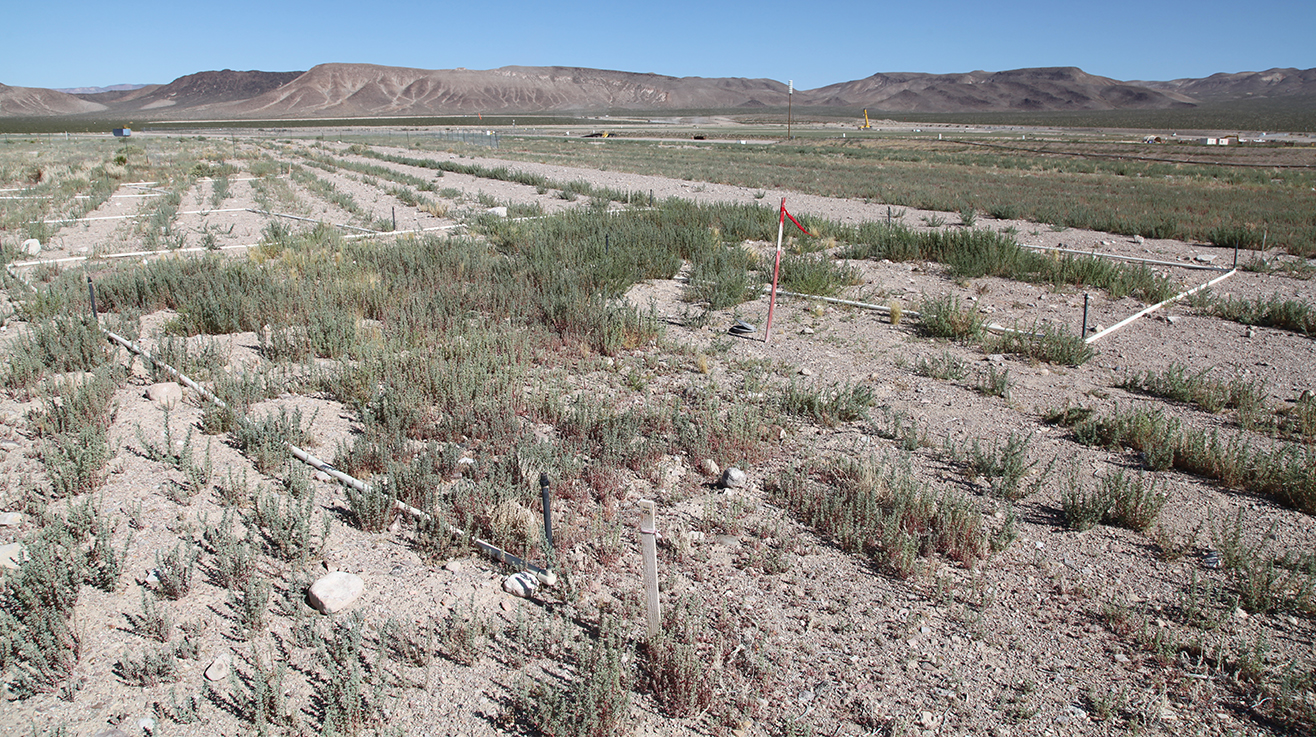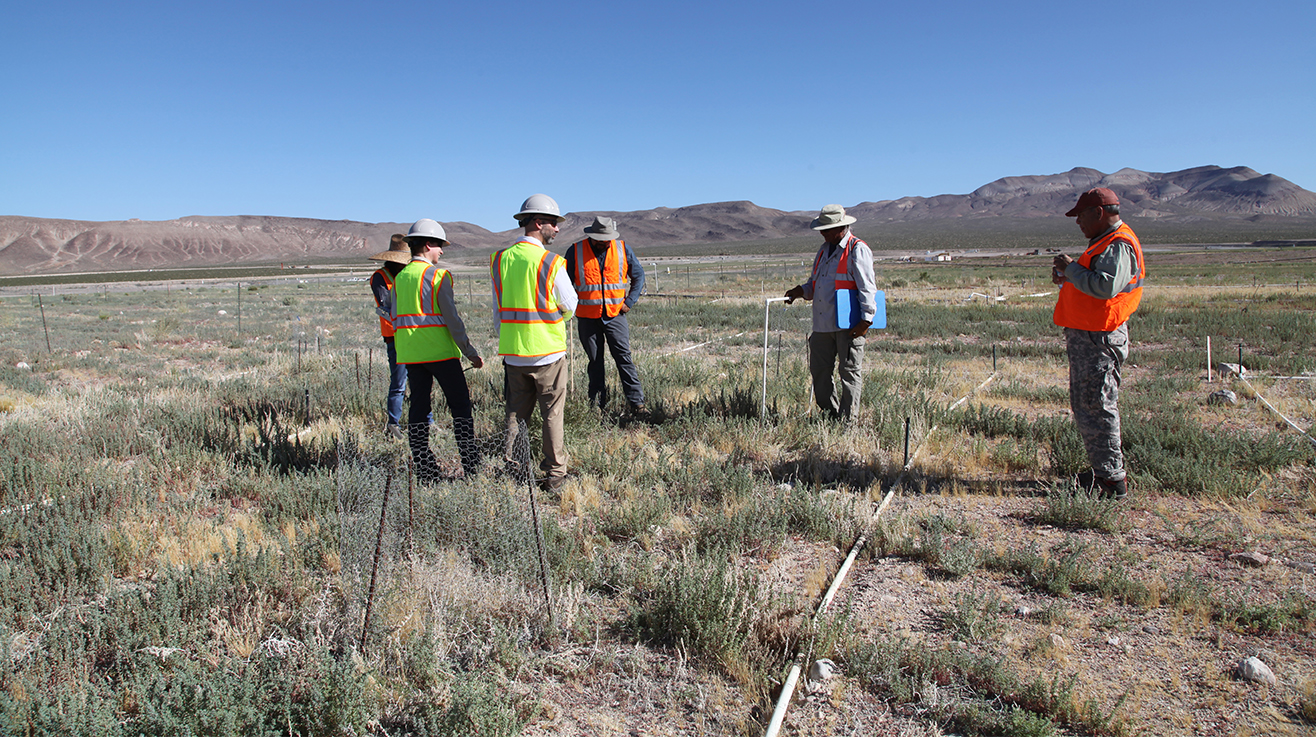The Consolidated Group of Tribes and Organizations (CGTO) — a collection of 16 Native American tribes with cultural and historical ties to the Nevada National Security Site (NNSS) — is helping solve a unique challenge at the NNSS, using traditional ecological knowledge and thousands of years of history in a collaborative effort to revegetate portions of the site’s complex terrain.
At the request of the Environmental Management (EM) Nevada Program, the CGTO is working to develop recommendations to help revegetate 92 acres of land at the NNSS Area 5 Radioactive Waste Management Complex (RWMC). That complex is dedicated to the permanent disposal of low-level and mixed low-level radioactive waste generated at DOE sites involved with historical nuclear research, development, and testing activities, as well as ongoing national security and science missions.
“Thanks and appreciation for the support, wisdom, and knowledge offered by the CGTO and its members,” EM Nevada Program Manager Rob Boehlecke said. “The historical and present-day contributions of these tribes have done so much to enhance EM’s mission at the NNSS for the benefit of the people, communities, and environment across the state of Nevada.”

Starting in the fall of 2011, NNSS crews began attempting to revegetate portions of the RWMC acreage. Despite frequent irrigation, varying seeding methods, and use of mulch, numerous efforts to reestablish vegetation were unsuccessful. No issues were found with seed quality when tested, and there are no contaminants present in the topsoil.
To assist with the revegetation mission, the CGTO agreed to provide guidance using traditional ecological knowledge formed from thousands of years of experience with the lands on and around the NNSS. A Tribal Revegetation Committee (TRC) comprised of six members of the CGTO was formed to provide guidance and cultural insights.
After several meetings and visits to the NNSS, the TRC provided several approaches for incorporating tribal perspectives in revegetating the site. Their proposals included four different revegetation treatments during two planting seasons, along with four transplant treatments during two planting seasons. In December 2017 and April 2018, seeds and transplants were planted at the site using these approaches. Tribal personnel have monitored progress once a month by counting, measuring, and photographing growth.

So far, the revegetation test plots have shown promise. The metrics set at the beginning of the project by the Nevada Division of Environmental Protection (NDEP), TRC, and Desert Research Institute were determined to not be consistent with the natural environment of the NNSS. New success metrics will be negotiated with NDEP and a report detailing the results will be available in March 2021. The EM Nevada Program will use this report to help determine the path forward for the RWMC, as well as broader future revegetation applications at the NNSS.

